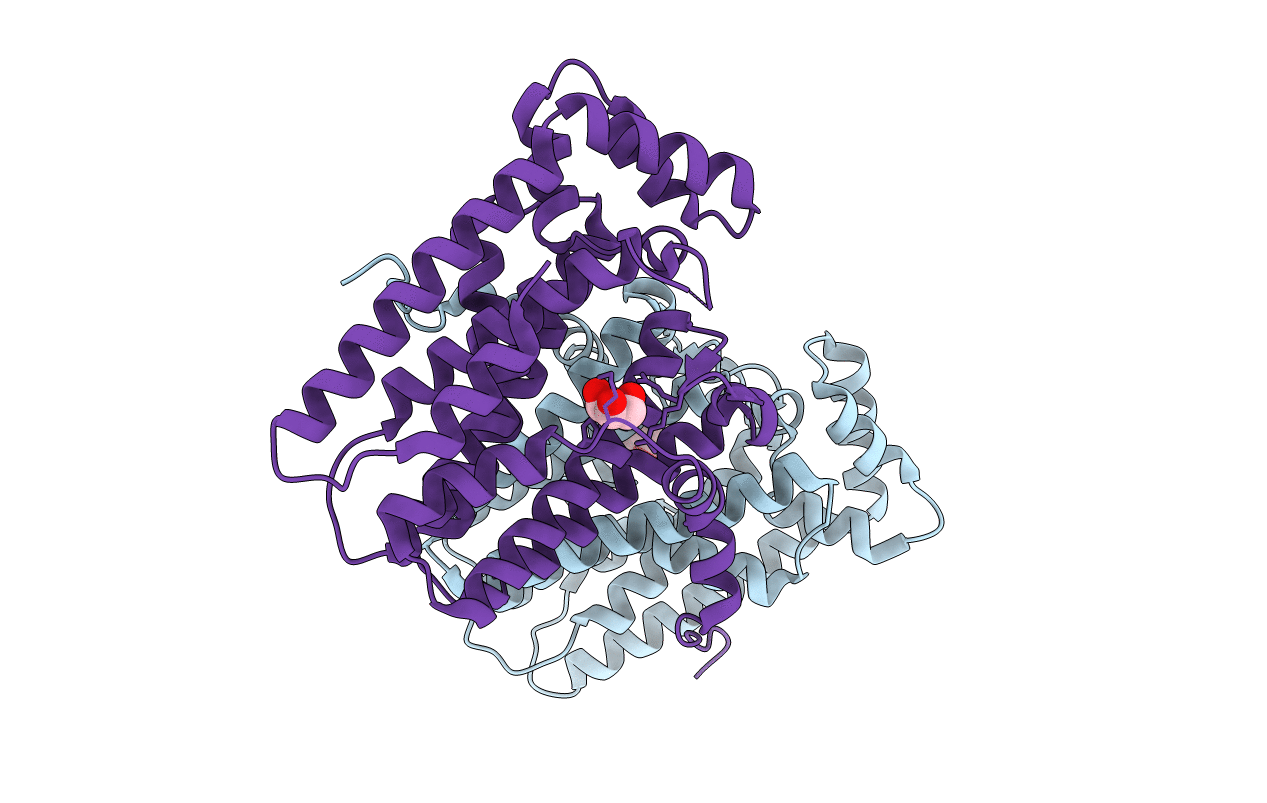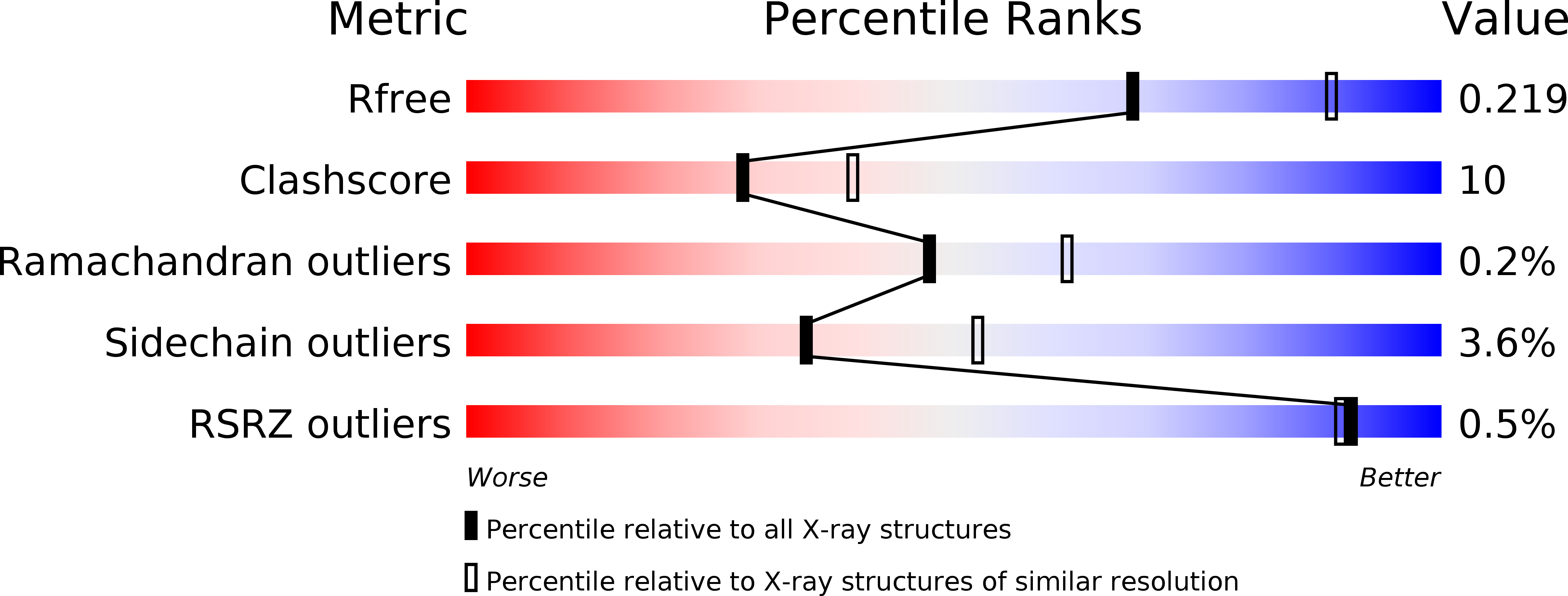
Deposition Date
2019-11-18
Release Date
2020-01-29
Last Version Date
2023-10-11
Entry Detail
PDB ID:
6V0K
Keywords:
Title:
Crystal structure of Penicillium verruculosum copalyl diphosphate synthase (PvCPS) alpha prenyltransferase domain
Biological Source:
Source Organism:
Talaromyces verruculosus (Taxon ID: 198730)
Host Organism:
Method Details:
Experimental Method:
Resolution:
2.41 Å
R-Value Free:
0.21
R-Value Work:
0.18
R-Value Observed:
0.18
Space Group:
P 3 2 1


